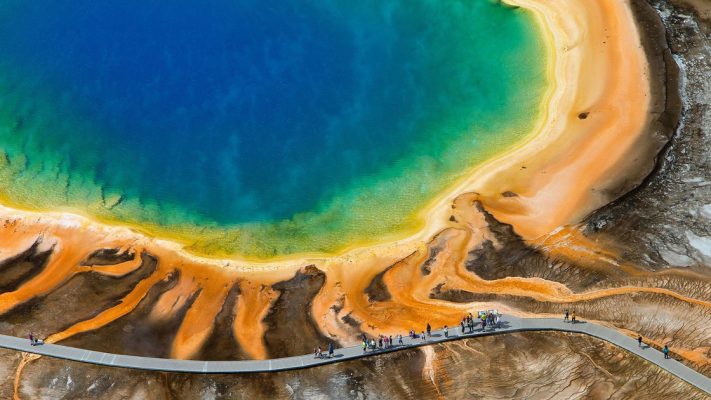
This feels like the plot to a movie, but it’s real life. NASA is putting a plan together to ensure that the Yellowstone Caldera, which is a volcano, doesn’t actually erupt in our life time. The consequences could be devastating if the volcano did erupt. And it did, but that was 70,000 years ago. Because there is no way of knowing when Yellowstone will erupt again, it is essentially a ticking time bomb. But ticking, in this case is relative. That might not be for another 1000 years. Or it could happen tomorrow. They just don’t know.
Based on previous eruptions, they are making the assumption that lava won’t be much of an issue. Which is a pretty big declaration to make, but the lava has never travelled far outside of the park boundaries. At least that’s what the United States Geological Survey is saying. Ash, however, could create a cloud that could eat up as much as 500 miles surrounding Yellowstone. Which means that the dust could cover a significant area in soot. Which isn’t exactly a good thing for crop growth, in what is the region responsible for a bulk of the food supply in the United States.
Ash clouds could also emit vast amounts of gas, which is mostly sulfur dioxide. These gases would then create an absorbent layer that catches sunlight and reflects much of it back into space. This could lead to a cooling effect that would last several decades. But there is nothing to be afraid about because scientists give this a minor chance of happening in the next 100 years. But, just in case, NASA has come up with a solution to prevent it from happening at all.
How exactly are they going to prevent it from happening? First, they would drill in from both sides of the volcano. Which would actually be outside the boundaries of Yellowstone National Park. Drilling down through the centre of the volcano would be dangerous, both due to the heat and instability caused by poking holes into the heart of an active volcano.
Next, they would pump water into one side, and back out of the other at high pressure. The exiting water would reach temperatures of around 350 degrees. The water would cool the volcano. Once the water exits the other side, the hot water would generate steam, which would actually be used to provide electricity to surrounding residents. Which is actually really cool, if you ask me.

NASA is saying:
“You would have to give the geothermal companies incentives to drill somewhat deeper and use hotter water than they usually would, but you would pay back your initial investment and get electricity which can power the surrounding area for a period of potentially tens of thousands of years. And the long-term benefit is that you prevent a future supervolcano eruption which would devastate humanity.”
If this is successful, it would cool Yellowstone at an estimated rate of 3.2 feet per year. At that rate, it would take thousands of years to cool the Caldera sufficiently, and even longer to ensure that there is no longer a threat of eruption. But that’s going to cost a lot of money, so it’s unlikely to happen. Especially given today’s political climate. No pun intended.



